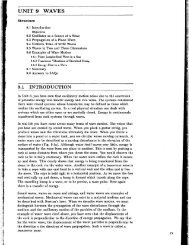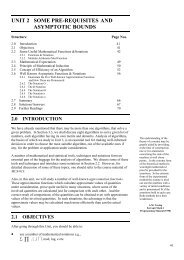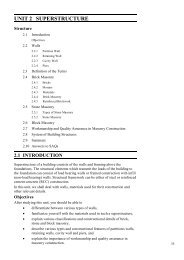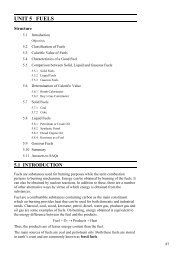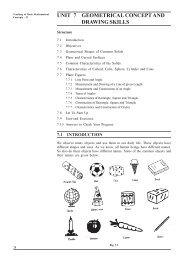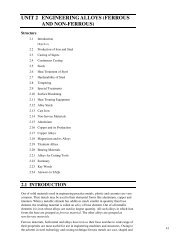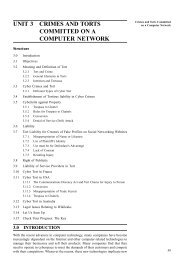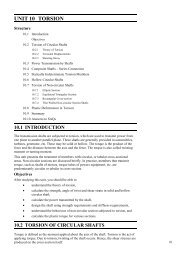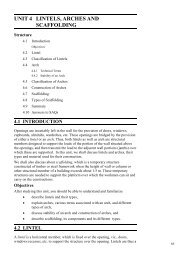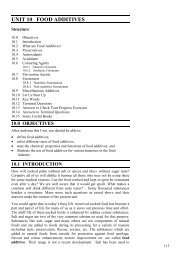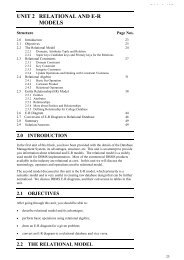unit 1 differential calculus - IGNOU
unit 1 differential calculus - IGNOU
unit 1 differential calculus - IGNOU
Create successful ePaper yourself
Turn your PDF publications into a flip-book with our unique Google optimized e-Paper software.
MATHEMATICS-II<br />
The knowledge and concepts of mathematics help in handling any engineering<br />
problem. In Mathematics-I, you have studied some topics on Algebra,<br />
Trigonometry, Coordinate Geometry and Vector Algebra. In Mathematics-II,<br />
which is in your hands, you will be studying some more concepts of mathematics<br />
which are a must for you. Mathematics-II will be dealing with the concepts of<br />
Differentiation, Integration, Complex Numbers, Matrices, Determinants and<br />
Statistics and consists of seven <strong>unit</strong>s.<br />
Units 1 and 2 are devoted to Differential Calculus. In fact, <strong>calculus</strong> was created to<br />
meet the pressing mathematical needs of 17th century for solving problems in<br />
Science and Technology.<br />
In Unit 1, the concept of function has been introduced and different types of<br />
functions and inverse functions have been discussed. This <strong>unit</strong> also lays the<br />
foundations of <strong>calculus</strong> in terms of definitions and theorems centering around<br />
limit and continuity of functions and algebra of derivatives.<br />
In Unit 2, we will be dealing with some of the applications of the derivatives to<br />
geometry and maxima and minima of functions. Some important theorems<br />
namely Rolle’s Theorem and Lagranges Mean-value Theorem have also been<br />
discussed to understand the concept of increasing and decreasing functions.<br />
Unit 3 and 4 deal with the concept of integrals and its applications.<br />
In Unit 3, indefinite integral of a function as an antiderivative has been defined<br />
and deals with the different techniques for finding integrals of functions.<br />
In Unit 4, the concept of definite integral has been introduced and some<br />
applications have been dealt such as finding the area of a curved surface.<br />
Unit 5 deals with the concept of complex numbers and its properties. The<br />
important De-Moiver’s theorem has also been discussed.<br />
Unit 6 deals with the algebra of matrices and the properties of determinants.<br />
Inverse of a matrix has been discussed and how it is used to solve a system of<br />
linear equations.<br />
In Unit 7, statistics, methods for collection of data, construction of frequency<br />
tables have been discussed. Mean and median measures of location and standard<br />
and mean deviation have been defined to analyse the information collected.<br />
For the want of clarity in concepts, number of solved examples have been<br />
introduced in each <strong>unit</strong>. To help you check your understanding and to assess<br />
yourself, each <strong>unit</strong> contains SAQs. The answers to these SAQs are given at the<br />
end of each <strong>unit</strong>. We suggest that you look at them only after attempting the<br />
exercises.<br />
At the end, we wish you all the best for your all educational endeavours.<br />
Differential Calculus<br />
55




